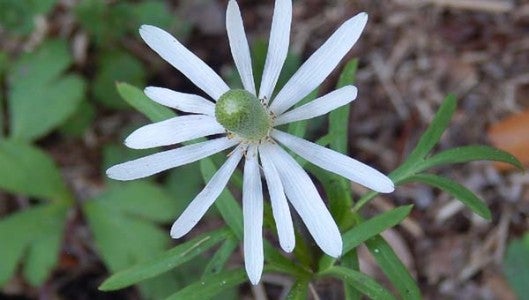Polk County’s Most Wanted — Plant
Published 10:00 pm Wednesday, March 25, 2015
In a joint effort to expand the knowledge and understanding of the flora and fauna of Polk County, the Pacolet Area Conservancy (PAC) and botanist David Campbell need your help in locating this month’s Polk County’s Most Wanted-Plant, the uncommon, yellow-flowered Ten-petal Anemone (Anemone berlandieri).
Ten-petal Anemone is a beautiful member of the Buttercup family. It displays flowers (lavender, white, or pink) from late February into mid-April in our region, so one must be on the lookout for this species early in the season. Flowering stalks are typically about 12 inches in height, but may be somewhat taller. Leaves are mostly trifoliate (divided into three leaflets) and basal (arising from the base, not the stem), although dissected leaves (divided into many deep, narrow segments) are also found just below the inflorescence (cluster of flowers).
Ten-petal Anemone prefers open, sunny sites in glades, hillsides, and around the margins of rock outcrops. Soils should be basic to circumneutral. This species is far more abundant to the southwest of our region. In North Carolina, this is a piedmont species recorded thus far from only nine counties, and is considered to be endangered. There is a historical record from Polk County in the mid-twentieth century.
If you think that you have seen this plant, know where it might be located, or know of a likely habitat for it, please contact PAC at 828-859-5060, or email comments, questions, or photos to landprotection@pacolet.org.
PAC is a 501(c)(3) non-profit conservation organization (land trust) founded in 1989 to protect and conserve natural resources with emphasis on the lands and waterways with scenic, ecological, and agricultural significance in the North Pacolet and Green River watersheds (PACs mission). PAC works with area landowners to ensure the long-term protection of their property through voluntary conservation easements (agreements) which enable landowners to maintain ownership of their property, preserving precious natural resources (open lands, forests, wildlife habitat, scenic vistas, farmland, stream banks, etc.), and potentially obtain significant federal, state and local tax benefits. PACs vision is a community living and growing in harmony with our natural resources and or goal is to provide a legacy that will endure and be valued by generations to come.
– Submitted by Pam Torlina




